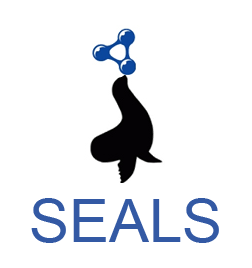

We have run the evaluation in a high performance server with 16 CPUs and allocating 15 Gb RAM.
Precision, Recall and F-measure have been computed with respect to a UMLS-based reference alignment. Systems have been ordered in terms of F-measure.
In the OAEI 2013 largebio track 13 out of 21 participating OAEI 2013 systems have been able to cope with at least one of the tasks of the largebio track.
Synthesis, WeSeEMatch and WikiMatch failed to complete the smallest task with a time out of 18 hours, while MapSSS, RiMOM, CIDER-CL, CroMatcher and OntoK threw an exception during the matching process; note that the latter two threw an out-of-memory exception.
In total we have evaluated 20 system configurations (see information about variants).
XMap participates with two variants. XMapSig, which uses a sigmoid function, and XMapGen, which implements a genetic algorithm. ODGOMS also participates with two versions (v1.1 and v1.2). ODGOMS-v1.1 is the original submitted version while ODGOMS-v1.2 includes some bug fixes and extensions.
LogMap has also been evaluated with two variants: LogMap and LogMap-BK. LogMap-BK uses normalisations and spelling variants from the general (biomedical) purpose UMLS Lexicon, while LogMap has this feature deactivated.
AML has been evaluated with 6 different variant depending on the use of repair techniques (R), general background knowledge (BK) and specialised background knowledge based on the UMLS Metathesaurus (SBK).
YAM++ and MaasMatch also use the general purpose background knowledge provided by WordNet.
We have also re-run the OAEI 2012 version of GOMMA. The results of GOMMA may slightly vary w.r.t. those in 2012 since we have used a different reference alignment.
Note that, since the reference alignment of this track is based on the UMLS Metathesaurus, we did not included within the results the alignments provided by AML-SBK and AML-SBK-R. Nevertheless we consider their results very interesting: AML-SBK and AML-SBK-R averaged F-measures higher than 0.90 in all 6 tasks.
Together with Precision, Recall, F-measure and Runtimes we have also evaluated the coherence of alignments. We have reported (1) number of unsatisfiabilities when reasoning with the input ontologies together with the computed mappings, and (2) the ratio/degree of unsatisfiable classes with respect to the size of the union of the input ontologies.
We have used the OWL 2 reasoner MORe to compute the number of unsatisfiable classes. For the cases in which MORe could not cope with the input ontologies and the mappings (in less than 2 hours) we have provided a lower bound on the number of unsatisfiable classes (indicated by ≥) using the OWL 2 EL reasoner ELK.
In this OAEI edition, only three systems have shown mapping repair facilities, namely: YAM++, AML with (R)epair configuration and LogMap. The results show that even the most precise alignment sets may lead to a huge amount of unsatisfiable classes. This proves the importance of using techniques to assess the coherence of the generated alignments.
1. System runtimes and task completion
2. Results for the FMA-NCI matching problem
3. Results for the FMA-SNOMED matching problem
4. Results for the SNOMED-NCI matching problem
5. Summary results for the top systems
6. Harmonization of the mapping outputs
7. Mapping repair evaluation